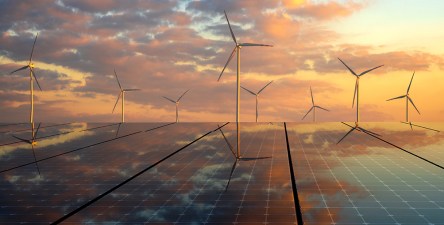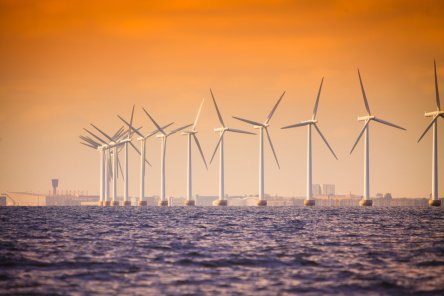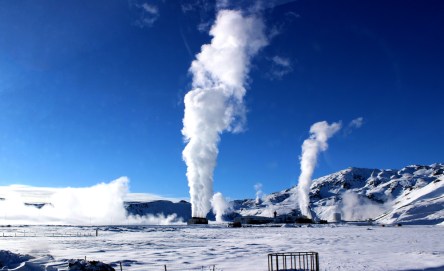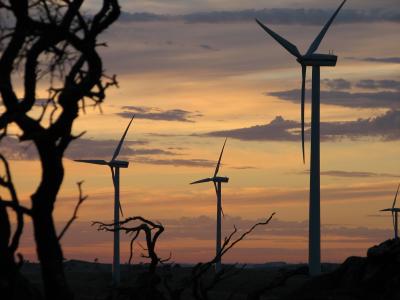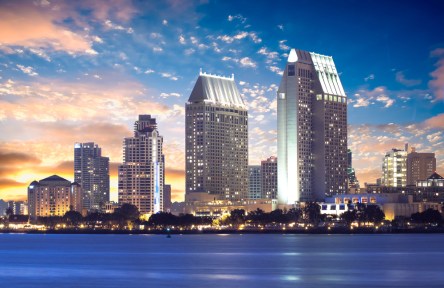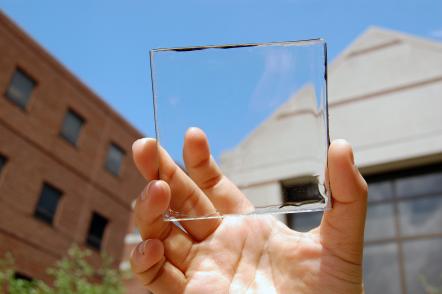Some industries, such as technology and online media, are doing well amid COVID-19, even as the pandemic cuts a swath through virtually every public health, political, social and economic structure. Other segments of the economy, such as travel and hospitality, face a perilous future. And what about the vital energy sector? Before the pandemic hit, energy demand was projected to grow 12% between 2019 and 2030, as developing nations broadened their power generation capacities. But COVID-19 “has brought the generation of energy from fossil fuels to breaking point,” says the World Economic Forum, with global energy demand declining by 5% in 2020. Despite a larger population and world economy, demand in 2050 will be about the same as it is today, according to risk management and quality assurance experts DNV GL, due partly to the effects of COVID-19. “The scale of the fall in demand, the speed of change, and how widespread it has been have generated a radical shift that seems to be more than a temporary short-term drop in demand for fossil fuels, at least in the power sector,” Nelson Mojarro, a World Economic Forum advisor, said in June. That development has opened the door for renewable energy generation to play an even more prominent role on the world energy scene. Renewables, including solar, whose cost has fallen by 82% over a decade, are the lowest-cost source of new power generation, according to the International Renewable Energy Agency. That trend is expected to hold over the foreseeable future. And COVID-19, Mojarro says, “has had a game-changing effect in accelerating the clean energy transition in the power sector.” Within 10 weeks of the start of widespread lockdowns, according to data compiled by the International Energy Agency, the U.S. increased its renewable energy consumption...
Revisiting the 1920s
Energy Then . . . and Now
Here’s a look at some energy milestones from the last time a ’20s decade dawned—a period described by Marquette University economics professor Gene Smiley as “the first truly modern decade.” Wind. In 1919, two Danish engineers advanced windmills’ state of the art by designing blades that worked like the wings of an airplane. Their “Agricco” could turn to adjust to the wind flow and automatically rotated to face into the wind. A German-developed windmill capable of producing electricity from wind and the U.S.-bred first wind power company followed in 1920 and 1922, respectively. Wind technology was superseded in the 1930s by power lines capable of transmitting electricity to rural areas. In common with other renewable energy sources, wind experienced a renaissance in the wake of the oil crises of the 1970s. Today, “renewable energy is seeing a boom in growth, with wind energy leading the way” and accounting for nearly 7% of U.S. electricity generation, according to the National Geographic. The World Wind Energy Assn. reports that global capacity for wind turbines reached 600 gigawatts by the end of 2018. There are 57,000 land and offshore wind turbines in the U.S. alone. Geothermal. At The Geysers, some 70 miles north of San Francisco, molten rock lying relatively close to the Earth’s service heats water in overlying permeable rock to very high temperatures. In 1921 an engineer drilled a geothermal well that powered a generator for lighting a local resort. In 1960, a steam-generated plant at The Geysers began generating electricity commercially. The Geysers stands today as the world’s largest commercially productive geothermal field. Its average output in 2017 was 647.7 net megawatts. Geothermal energy—which can be used for heating, cooling and generating electricity—contributes more than 3.7 gigawatts to the national grid, making the U.S....
Not just hot air
Geothermal's potential
Look up and there’s the sun, whose rays can be captured and converted into electricity. Peer down and see fossil fuels, the engine for much of the world’s economy. You need to burrow even further to find another key source of energy, one that’s driven by the molten essence of the Earth. Geothermal energy originates from the heat at the planet’s center. It can be captured as a source of electricity to heat and cool buildings with geothermal heat pumps, which transfer heat to buildings by pumping water or a special fluid through pipes just below the Earth’s surface. Geothermal energy can also generate electricity through geothermal power plants using wells drilled 1 to 2 miles deep into the Earth to pump steam or hot water to the surface. Tapping the Earth’s internal heat dates back thousands of years, with Roman, Chinese and Native American cultures using hot mineral springs for bathing, cooking and eating. The first geothermal plant, built in Italy in 1904, used steam to turn a turbine that powered five light bulbs. Today, more than 20 countries generate geothermal energy, according to National Geographic. Iceland and the Philippines meet nearly one-third of their electricity demand with geothermal energy, while18 power plants at the Geysers Geothermal Complex north of San Francisco comprise the world’s largest geothermal installation. The U.S., the global leader for installed geothermal capacity, provides more than 3.7 gigawatts to the national grid, according to the U.S Department of Energy. Although geothermal offers an environmentally friendly, renewable, reliable and stable energy source with the smallest land footprint of any major power source, it does have its drawbacks. These include the risk of releasing greenhouse gases that tend to congregate near geothermal power plants, power plants’ effect on fragile land stability, high...
Renewable Power
Google's energy business plan
After signing its first agreement to purchase all the electricity from a 114-megawatt wind farm in Iowa in 2010, Google set the target to be powered 100 percent by renewable energy only two years later. According to one of the company’s latest blog posts on the initiative, the said target will be reached in 2017, following a complex process involving many power purchase agreements. “To reach this goal we’ll be directly buying enough wind and solar electricity annually to account for every unit of electricity our operations consume, globally. And we’re focusing on creating new energy from renewable sources, so we only buy from projects that are funded by our purchases,” said Urs Urs Hölzle, Google’s senior VP of technical infrastructure. Technology companies have been criticized for the carbon footprint of their operations, which have expanded so fast they now account for about 2 percent of global greenhouse emissions, rivaling the aviation industry. The internet giant is already the world’s biggest corporate buyer of renewable electricity (Amazon is a distant second), last year buying 44 percent of its power from wind and solar farms. The majority of the green power comes from windfarms in the U.S., but also from projects around the world including sites in Sweden, the Netherlands and Chile. In order to get here, Google took part in a number of large-scale deals with renewable producers, guaranteeing to buy the energy they make with their wind turbines and solar cells. Those guarantees help wind companies obtain bank financing to build more turbines. One of the most attractive, cost-efficient features of wind power is that, unlike carbon-based power, wind supply prices don’t fluctuate, thus allowing Google to plan better. Moreover, the more renewable energy it purchases, the cheaper those sources get—in Chile, Google said,...
Renewable City
Clean Energy for San Diego
Blessed with an average of 266 sunny days per year, it’s no surprise San Diego currently generates 189 megawatts of solar power. Though it boasts the second highest solar wattage in the country, the city doesn’t plan to rest on its laurels. Instead, this southern California metropolis of over 1 million has set its sights on something grander: to be largest U.S. city completely powered by renewable energy. Known as the “birthplace of California,” this trans-border urban outpost sits at the center of U.S. innovation, playing host to military, biotechnology and medical research and manufacturing. Over the years, San Diego’s commitment to sustainability and environmentally focused city planning has resulted in an extensive infrastructure renaissance and citywide green initiatives. With an eye on reducing carbon emissions and mitigating the effects of global warming, a bipartisan coalition led by Republican Mayor Kevin Faulconer unanimously approved the city’s Climate Action Plan last December. The goal is to cut greenhouse gas emissions and shift to 100% renewable energy sources by 2035. The Climate Action Plan also includes a goal of 90% solid waste recycling along with significant funding for public transportation. “Today, we are faced with an issue that affects us all. Our city’s responsibility is to ensure a clean, sustainable San Diego for generations to come,” Faulconer writes in his introduction to the Climate Action Plan. “San Diegans from different backgrounds are coming together to proactively address environmental concerns, strengthen our economy and improve our quality of life.” The Climate Action Plan includes practical policies designed to strike a balance between environmental protection and economic opportunity. Those strategies include improved water resource management, targeted public information campaigns, and green jobs incentives. “We have an opportunity to improve the lives of every San Diegan,” concludes Faulconer. “This...
Bright Future
Harnessing solar technology
With the effects of climate change becoming more and more visible every passing day, introducing environmentally friendly practices into everyday life becomes increasingly important. And while renewable energy still has high investment costs in many cases, returns on initial investments do not fail to appear. They may come in special tax rates, increase in prestige, lower operating costs, increased rent rates and high occupancy levels, thanks to green-loving Millennials. Plummeting costs And as more research goes into green energy and renewable sources, initial investment costs are dropping by the day. In fact, according to recently revealed research by the Lappeenranta University of Technology (LUT) in Finland, solar and wind energy is expected to become the cheapest form of energy in the near future. The Neo-Energy project, which conducted the research, uncovered that North-East Asia, especially China will be able to switch to a completely renewable energy system within five to ten years, under economically feasible conditions. In fact, project simulations show that the price of solar electricity will be cut in half by 2025-2030, thanks to costs decreasing 20 percent every times capacity is doubled. Solar cells from the sea Not only is solar energy becoming more cost-effective, it is also getting greener every day. While green energy becoming greener does sound somewhat unnecessary, no energy source is completely green. Wind turbines and photovoltaic panels are still manufactured using man-made materials, the production of which does in itself also carry a carbon footprint. Not for long, though, if researchers at Queen Mary University of London’s (QMUL) School of Engineering have their way. In February 2015, QMUL researchers have announced successfully creating electricity-generating solar cells using the chemicals chitin and chitosan, found in the shells of shrimp and various other crustaceans. The two biomass-derived materials...

